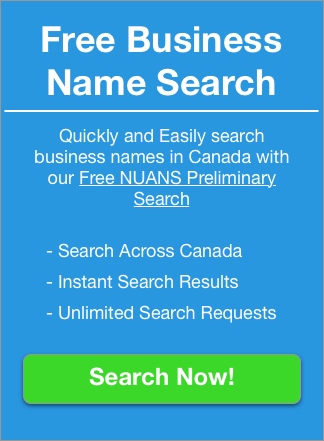How To Develop The Best Startup Business Model For Your Business

When you are developing a new business, you need to have a plan to guide your business decisions. Only 10% of startups succeed, and a good startup business model is one of the major factors that will set your business apart from the other 90%.
Because the Canadian market is a great place for startups, small businesses are the backbone of the Canadian economy with over 41% of Canadians working for a company with less than 20 employees. So clearly startups work; you just need the right inspiration and the right business model.
This article will show you some of the best startup business models, tailored for the realities of starting a new small business.
What is a Business Model?
The term “business model” gets thrown around a lot, but can you really define it? You can’t make a business model without understanding what exactly it is.
Your business model plans out exactly how you will run your business in order to make a profit. You need to take into account your operation and equipment costs, subtracting those from the profits you can expect to make based on your pricing.
You need to be able to clearly and simply define your target market. Ask yourself, who will you be selling to, and how? What will they be willing to pay for your product or service, and will this cover your costs and provide a profit?
There are general strategies that should go into every business plan, but the world of startups presents its own unique challenges that your business model needs to address.
1. Become A New Marketplace
The internet is the world’s largest marketplace, with millions of dollars being exchanged online every day.
From megaliths like Amazon, where consumers can buy virtually any product, to specialized websites like Etsy that allow shoppers to pick up unique goods, online marketplaces are hugely popular.
They are great for shoppers, who can find products that are unique and custom, or cheaper than they might find in stores. It’s also great for store owners, who can sell their goods without having to invest in a physical storefront.
Running these sorts of marketplaces is a viable startup idea. Basically, you build a space that allows people to advertise and sell their goods, running stalls in a virtual bazaar. You make your money by charging a small fee to store owners, shoppers, or by taking a percentage of any sales.
The good thing about this startup business model is that you don’t need to provide inventory, so you don’t need much money to get going. You don’t have the same level of risk that comes with manufacturing, storing, and shipping products.
To make this work though, you need to have a strong draw to attract people. You need to fill a unique niche. Filling a niche gives consumers and sellers a reason to use your marketplace rather than any of the other ones already on the web.
As a startup, it’s probably best to specialize rather than trying to go broad. You may not be able to compete with Amazon when it comes to the variety of products. Instead, fill a marketplace niche.
2. Sell With a Subscription Model
Subscriptions aren’t just for magazines anymore!
Consumers love unique, interesting subscription services. Subscription services are great because once they’re set up, the customer doesn’t have to worry about them. The money is withdrawn from their account automatically, and they get their product without having to go out and shop around.
Some subscription services like the Dollar Shave Club simply provide the same product at regular intervals, basically providing customers with replacements for something they need.
Other subscription services sell themselves on providing something new and interesting with each package. For example, consumers may subscribe to beauty product boxes; each month, they would receive a box containing new products for them to try.
This model is good for consumers and for you because it makes it easy to plan your finances. Customers know exactly how much they’ll pay each month, and you know how much money you can expect to come in.
3. Re-Think On Demand Service
The success of services such as Uber, which provide a service instantly at the push of a button, have defined a lot of startups looking to get in on the popularity of the “on-demand economy.”
It is tempting to jump on this trend. For many startups, it seems like a way to jump ahead of the competition, selling your customers both a great product or service and incredible convenience.
Before you fall into this startup business model, really consider whether you will be able to manage the difficulties of on-demand service. It tends to raise costs, so you need to be sure that customers will be willing to pay extra for this speedier service.
Unfortunately, most customers aren’t willing to really pay the costs of on-demand service. The reason services like Uber work are because they have so many drivers, and those drivers only get paid when they’re on a job.
Plus, if this is your first business, you may not know what to expect. This can cause you to overestimate what you can accomplish and how quickly.
Instead of instantly trying to go on-demand, really look at your business idea. What are the most important parts of it? Is it the quality of the product, the uniqueness of the service, or the speed of delivery? If it’s anything but the third, move away from on-demand service.
Instead, consider a model where you provide a speedy service without falling completely into the trap of on-demand. Balance the expectations you build for your customers with what makes financial sense.
4. Attract Customers With Freemium Content
People love free stuff. By using a freemium model, you can entice users in droves with a free service. Your profit comes from encouraging users to shell out for additional features and bonuses.
The freemium model works because the free basic service acts as an incredibly powerful form of advertising. People get to try out your service and make sure they like it before deciding to pay for the additional perks.
This tends to be more attractive to consumers than a free trial; people are less likely to want to sign up for a service that will get taken away from them after a month.
The challenge with freemium content is finding balance. You need to make sure that there is sufficient incentive for users to upgrade to the paid service. At the same time, however, you need to make sure that the free version has enough features to do the job.
5. Go Customized
Customization is a great way to add value to your product or service. It means you’re providing something to your customer that they can’t get anywhere else.
Whether you’re designing custom T-shirts, selling personalized artwork commissions, crafting phone cases, or 3D printing knickknacks, people will be thrilled to get exactly what they want.
Plus, people tend to expect to pay more for customization. This means you will be able to handle increased costs that might come along with this business model.
With this business model, it is generally best to focus on a specific niche. Instead of trying to provide your customers with everything, pick a few things that you know you have a great handle on. This will also allow you to be more creative in your customization options.
6. Become a Virtual Goods Vendor
Call it one of the strange quirks of the internet, but many people are perfectly happy to spend real money on virtual goods.
Perhaps two of the most famous examples of this are the games Farmville and Candy Crush.
Both games are free to play but allow users to purchase items within the games. Whether they are powerups, tools, or decorations, players spend real money on things that can only be used in-game.
To take advantage of this model, you need to create a service that is good on its own but can be improved with certain perks. This can be a game, an app, a website — anything you can think of!
The great thing about this model is that most of your costs go into development and maintaining your service. Since the goods that you’re selling are virtual, they cost you virtually nothing!
Conclusion
All of these strategies have been behind some of the most successful startups in the past decade. From AirBnB to Uber, the potential for startups in the Internet Age is incredible. Anyone can start and succeed at a business, even without a lot of cash.
If you’ve already got a killer startup idea, see which of these models would suit it best. Are you providing a service, or planning to sell goods? Are you tech-savvy enough to build an app, or will you run a more traditional web service?
Ask yourself these questions as you narrow down which startup business model would best support your business idea. Once you’ve got the general concept, you can start planning the nitty gritty details: costs, profits, and suppliers.
With these strategies, you can build the startup you’ve always wanted and start turning your dreams into reality.

